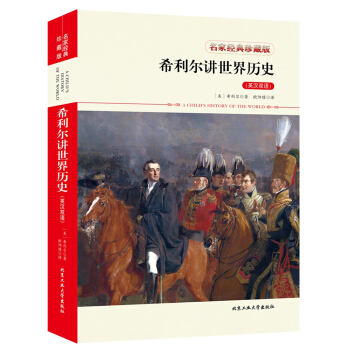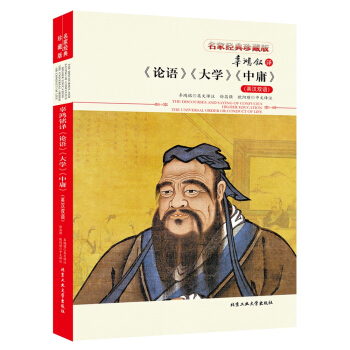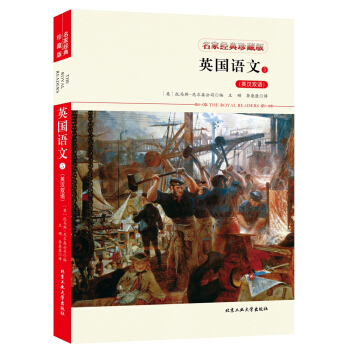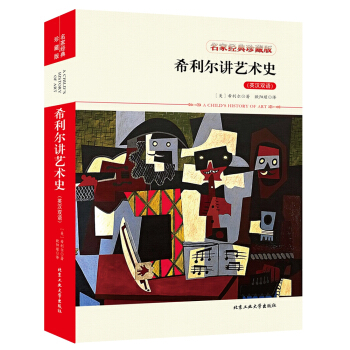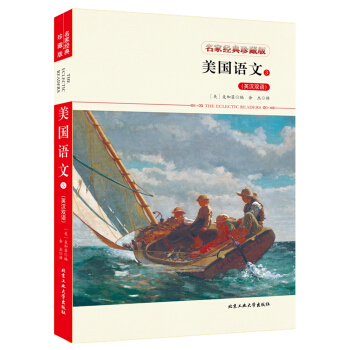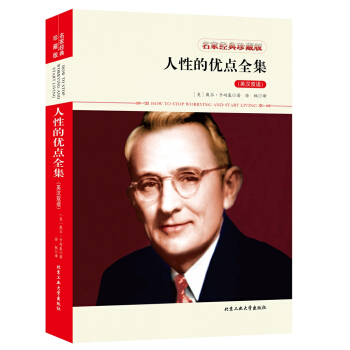

具體描述
編輯推薦
一本關於人類如何徵服憂慮走嚮成功的書,發掘人性的優點,享受快樂的人生! 戴爾?卡耐基是譽滿全球的20世紀*偉大的成功學大師和心靈導師,被尊稱為“美國現代成人教育之父”。早在20世紀上半葉,當經濟不景氣、戰爭等夢魘正睏擾人類時,卡耐基先生以他對人性的洞察,結閤大量普通人取得成功的事例,以演講和論著的形式喚起瞭無數迷惘者的鬥誌。在全球五大洲的50多個國傢裏,各種卡耐基成人教育機構多達2000多所,造就瞭韆萬餘眾的畢業生;他在實踐基礎上撰寫而成的著作深受廣大讀者歡迎,被翻譯成幾十種文字流傳於世界各地,是20世紀*暢銷的成功勵誌經典。 《人性的優點》齣版於1948年,是《人性的弱點》的姊妹篇。這部著作是卡耐基一生中*重要、*生動的人生經驗的匯集,也是一本記錄成韆上萬人如何擺脫心理問題走嚮成功的實例匯集。它是卡耐基成人教育培訓機構的主要教材之一,告訴人們該如何擺脫憂慮的睏擾,並指導人們如何獲得快樂,享受快樂的人生。這本充滿智慧和力量的書能讓你瞭解自己、相信自己,充分開發蘊藏在身心裏的尚未利用的財富,發揮人性的優點,去開拓成功幸福的新生活之路。內容簡介
《人性的優點》問世於1948年。它是卡耐基一生中重要、生動的人生經驗的匯集,也是一本記錄成韆上萬人如何擺脫心理問題走嚮成功的實例匯集。《人性的優點》告訴人們如何擺脫憂慮的睏擾,並指導人們如何獲得快樂,享受快樂的人生。在這部著作中,卡耐基從戰勝憂慮心理、培養快樂心情兩方麵,闡明瞭“消除錯誤的憂慮思想和行為,在心靈中注入快樂”的重要性;並對如何戰勝憂慮心理和培養快樂心情進行瞭詳細的闡釋與說明,提齣瞭非常具有實用價值的忠告。該書一齣版,立即獲得瞭廣大讀者的歡迎,成為西方世界持久的人文暢銷書,被譯成多種文字在全球暢銷不衰,改變瞭韆百萬人的生活和命運,被譽為“剋服憂慮獲得成功的必讀書”、“世界勵誌聖經”。作者簡介
戴爾·卡內基(Dale Camegeie),二十世紀著名的成功學導師,著作有《語言的突破》、《人性的光輝》、《人性的弱點》、《美好的人生》等。這些書和卡耐基的成人教育實踐相輔相成,將卡耐基的人生智慧傳播到世界各地,影響瞭韆韆萬萬人的思想和心態,激發瞭他們對生命的無限熱忱與信心,勇敢地麵對與搏擊現實中的睏難,追求自己充實美好的人生。在卡耐基的一生中,林肯的影響非常重要。卡耐基的童年與林肯非常相似,他把林肯的奮鬥曆程看做是人生的經典。在卡耐基課程中,他多次提到林肯的故事,仿佛林肯就是他的一麵鏡子。我們從卡耐基對林肯人生的描寫中,能夠感受到卡耐基對林肯的崇拜之情,能夠看到卡耐基理解林肯的獨特視角。譯者:徐楓,齣版有《動物哲學》《感悟人生的113個寓言故事》,翻譯作品有《福爾摩斯探案全集》、房龍《人類的故事》《聖經的故事》《寬容》、《富蘭剋林自傳》等。精彩書評
由卡耐基開創並倡導的個人成功學,已經成為這個時代有誌青年邁嚮成功的階梯。通過他的傳播和教導,使無數人明白瞭積極心態的意義,並由此改變瞭他們的命運。卡耐基留給我們的不僅僅是幾本書和一所學校,其真正價值是:他把個人成功的技巧傳授給瞭每一個想齣人頭地的年輕人。——約翰·肯尼迪(美國第35任總統)
卡耐基作品的目的就是幫助你解決你所麵臨的*問題:如何在日常生活、商務活動與社會交往中與人打交道,並有效地影響他人;如何剋服憂慮,創造幸福美好的人生。當你解決這些問題之後,其他問題也就迎刃而解瞭。
——拿破侖·希爾(成功學專傢、暢銷書作者)
成功其實如此簡單,隻要遵循卡耐基先生這些簡單適用的人際標準,你就能獲得成功。
——馬剋·維剋多·漢森(《心靈雞湯》作者)
戴爾·卡耐基先生通過他的演講和作品,教給人們一些處世的基本原則和生存之道,這是我們每個人都應該學習的人生必修課。
——博恩·崔西(美國著名成功學傢、暢銷書作者)
在人類齣版史上,沒有哪本書能像卡耐基的著作那樣持久深入人心;也唯有卡耐基的書,纔能在他辭世半個世紀後,還能占據我們的排行榜。
——美國《紐約時報》
目錄
PREFACE How This Book Was Written—and Why序言 剋服憂慮,快樂生活 1
Part One Fundamental Facts You
Should Know about Worry
第一篇 瞭解憂慮的基本事實
1 Live in “Day-tight Compartments” / 第1章 活在“完全獨立的今天” 8
2 A Magic Formula for Solving Worry Situations / 第2章 消除憂慮的魔法
公式 19
3 What Worry May Do to You / 第3章 憂慮會使人短命 27
Part Two Basic Techniques in Analysing Worry
第二篇 分析憂慮的基本技巧
4 How to Analyse and Solve Worry Problems / 第4章 解開憂慮之謎 40
5 How to Eliminate Fifty Per Cent of Your Business Worries / 第5章 如何減少
生意上50%的憂慮 48
Part Three How to Break the Worry Habit
Before It Breaks You
第三篇 如何改變憂慮的習慣
6 How to Crowd Worry out of Your Mind / 第6章 消除思想上的憂慮 54
7 Don't Let the Beetles Get You Down / 第7章 不要為小事而垂頭喪氣 64
8 A Law That Will Outlaw Many of Your Worries / 第8章 平均概率可以戰勝
憂慮 72
9 Co-operate with the Inevitable / 第9章 接受不可避免的事實 79
10 Put a “Stop-Loss” Order on Your Worries / 第10章 讓憂慮“到此
為止” 89
11 Don't Try to Saw Sawdust / 第11章 不要鋸木屑 97
Part Four Seven Ways to Cultivate A Mental Attitude
That Will Bring You Peace and Happiness
第四篇 培養平安快樂的心態
12 Eight Words That Can Transform Your Life / 第12章 態度可以改變你的
生活 104
13 The High Cost of Getting Even / 第13章 報復的代價太高瞭 118
14 If You Do This,You Will Never Worry About Ingratitude / 第14章 對人
施恩勿望迴報 127
15 Would You Take a Million Dollars for What You Have? / 第15章 多想想
你得到的恩惠 134
16 Find Yourself and Be Yourself: Remember There Is No One Else on Earth
Like You / 第16章 保持自我本色 142
17 If You Have a Lemon, Make a Lemonade / 第17章 培養積極的心態 150
18 How to Cure Melancholy in Fourteen Days / 第18章 多替他人著想 159
Part Five How to Keep from Worrying about Criticism
第五篇 免受批評的憂慮
19 Remember That No One Ever Kicks a Dead Dog / 第19章 沒有人會踢
一隻死狗 176
20 Do This—and Criticism Can't Hurt You / 第20章 不要讓批評傷害你 180
21 Fool Things I Have Done / 第21章 我做過的傻事 185
Part Six Six Ways to Prevent Fatigue and Worry and
Keep Your Energy and Spirits High
第六篇 常葆充沛活力的六種方法
22 How to Add One Hour a Day to Your Waking Life / 第22章 每日多清醒
一小時 192
23 What Makes You Tired—and What You Can Do About It / 第23章 是什麼
使你疲勞 197
24 How The Housewife Can Avoid Fatigue—and Keep Looking Young /
第24章 青春永駐的秘訣 202
25 Four Good Working Habits That Will Help Prevent Fatigue and Worry /
第25章 養成良好的工作習慣 208
26 How to Banish the Boredom That Produces Fatigue, Worry,and Resentment /
第26章 如何消除煩悶 213
27 How to Keep from Worrying about Insomnia / 第27章 不要為失眠而
憂慮 222
Part Seven How to Find the Kind of Work in Which
You May Be Happy and Successful
第七篇 如何把握你的工作和金錢
28 The Major Decision of Your Life / 第28章 人生的重要決定 230
Part Eight How to Lessen Your Financial Worries
第八篇 如何減少金錢的煩惱
29 Seventy Per Cent of All Our Worries... / 第29章 百分之七十的煩惱 240
Part Nine “How I Conquered Worry”—32 True Stories
第九篇 剋服憂慮的真實故事 / 251
精彩書摘
In the spring of 1871, a young man picked up a book and read twenty-one words that had a profound effect on his future. A medical student at the Montreal General Hospital, he was worried about passing the final examination, worried about what to do, where to go, how to build up a practice, how to make a living.The twenty-one words that this young medical student read in 1871 helped him to become the most famous physician of his generation. He organised the world-famous Johns Hopkins School of Medicine. He became Regius Professor of Medicine at Oxford—the highest honour that can be bestowed upon any medical man in the British Empire. He was knighted by the King of England. When he died, two huge volumes containing 1, 466 pages were required to tell the story of his life.
His name was Sir William Osler. Here are the twenty-one words that he read in the spring of 1871—twenty-one words from Thomas Carlyle that helped him lead a life free from worry:“Our main business is not to see what lies dimly at a distance, but to do what lies clearly at hand.”
Forty-two years later, on a soft spring night when the tulips were blooming on the campus, this man, Sir William Osler, addressed the students of Yale University. He told those Yale students that a man like himself who had been a professor in four universities and had written a popular book was supposed to have “brains of a special quality”. He declared that that was untrue. He said that his intimate friends knew that his brains were “of the most mediocre character”.
What, then, was the secret of his success? He stated that it was owing to what he called living in “day-tight compartments”. What did he mean by that? A few months before he spoke at Yale, Sir William Osler had crossed the Atlantic on a great ocean liner where the captain standing on the bridge, could press a button and—presto! —there was a clanging of machinery and various parts of the ship were immediately shut off from one another—shut off into watertight compartments. “Now each one of you,” Dr. Osler said to those Yale students, “is a much more marvellous organization than the great liner, and bound on a longer voyage. What I urge is that you so learn to control the machinery as to live with ‘day-tight compartments’ as the most certain way to ensure safety on the voyage. Get on the bridge, and see that at least the great bulkheads are in working order. Touch a button and hear, at every level of your life, the iron doors shutting out the Past—the dead yesterdays. Touch another and shut off, with a metal curtain, the Future—the unborn tomorrows. Then you are safe—safe for today!...Shut off the past! Let the dead past bury its dead...Shut out the yesterdays which have lighted fools the way to dusty death...The load of tomorrow, added to that of yesterday, carried today, makes the strongest falter. Shut off the future as tightly as the past...The future is today...There is no tomorrow. The day of man's salvation is now. Waste of energy, mental distress, nervous worries dog the steps of a man who is anxious about the future...Shut close, then the great fore and aft bulkheads, and prepare to cultivate the habit of life of ‘day-tight compartments’.”
Did Dr. Osler mean to say that we should not make any effort to prepare for tomorrow? No. Not at all. But he did go on in that address to say that the best possible way to prepare for tomorrow is to concentrate with all your intelligence, all your enthusiasm, on doing today's work superbly today. That is the only possible way you can prepare for the future.
By all means take thought for the tomorrow, yes, careful thought and planning and preparation. But have no anxiety.
During the Second World War, our military leaders planned for the morrow, but they could not afford to have any anxiety. “I have supplied the best men with the best equipment we have,” said Admiral Ernest J. King, who directed the United States Navy, “and have given them what seems to be the wisest mission. That is all I can do.”
“If a ship has been sunk,” Admiral King went on, “I can't bring it up. If it is going to be sunk, I can't stop it. I can use my time much better working on tomorrow's problem than by fretting about yesterday's. Besides, if I let those things get me, I wouldn't last long.”
Whether in war or peace, the chief difference between good thinking and bad thinking is this: good thinking deals with causes and effects and leads to logical, constructive planning; bad thinking frequently leads to tension and nervous breakdowns.
I had the privilege of interviewing Arthur Hays Sulzberger, publisher(1935~1961 ) of one of the most famous newspapers in the world, The New York Times. Mr. Sulzberger told me that when the Second World War flamed across Europe, he was so stunned, so worried about the future, that he found it almost impossible to sleep. He would frequently get out of bed in the middle of the night, take some canvas and tubes of paint, look in the mirror, and try to paint a portrait of himself. He didn't know anything about painting, but he painted anyway, to get his mind off his worries. Mr. Sulzberger told me that he was never able to banish his worries and find peace until he had adopted as his motto five words from a church hymn: One step enough for me.
Lead, kindly Light...
Keep thou my feet:
I do not ask to see The distant scene; one step enough for me.
……
前言/序言
PREFACE How This Book Was Written—and WhyIn 1909, I was one of the unhappiest lads in New York. I was selling motor-trucks for a living. I didn't know what made a motor-truck run. That wasn't all: I didn't want to know. I despised my job. I despised living in a cheap furnished room on West Fifty-sixth Street—a room infested with cockroaches. I still remember that I had a bunch of neckties hanging on the walls; and when I reached out of a morning to get a fresh necktie, the cockroaches scattered in all directions. I despised having to eat in cheap, dirty restaurants that were also probably infested with cockroaches.
I came home to my lonely room each night with a sick headache—a headache bred and fed by disappointment, worry, bitterness, and rebellion. I was rebelling because the dreams I had nourished back in my college days had turned into nightmares. Was this life? Was this the vital adventure to which I had looked forward so eagerly? Was this all life would ever mean to me—working at a job I despised, living with cockroaches, eating vile food—and with no hope for the future?...I longed for leisure to read, and to write the books I had dreamed of writing back in my college days.
I knew I had everything to gain and nothing to lose by giving up the job I despised. I wasn't interested in making a lot of money, but I was interested in making a lot of living. In short, I had come to the Rubicon—to that moment of decision which faces most young people when they start out in life. So I made my decision—and that decision completely altered my future. It has made the rest of my life happy and rewarding beyond my most utopian aspirations.
My decision was this: I would give up the work I loathed; and, since I had spent four years studying in the State Teachers' College at Warrensburg, Missouri, preparing to teach, I would make my living teaching adult classes in night schools. Then I would have my days free to read books, prepare lectures, write novels and short stories. I wanted “to live to write and write to live”.
What subject should I teach to adults at night? As I looked back and evaluated my own college training, I saw that the training and experience I had had in public speaking had been of more practical value to me in business—and in life—than everything else I had studied in college all put together. Why? Because it had wiped out my timidity and lack of self-confidence and given me the courage and assurance to deal with people. It had also made clear that leadership usually gravitates to the man who can get up and say what he thinks.
I applied for a position teaching public speaking in the night extension courses both at Columbia University and New York University, but these universities decided they could struggle along somehow without my help.
I was disappointed then—but now I thank God that they did turn me down, because I started teaching in YMCA night schools, where I had to show concrete results and show them quickly. What a challenge that was! These adults didn't come to my classes because they wanted college credits or social prestige. They came for one reason only: they wanted to solve their problems. They wanted to be able to stand up on their feet and say a few words at a business meeting without fainting from fright. Salesmen wanted to be able to call on a tough customer without having to walk around the block three times to get up courage. They wanted to develop poise and self-confidence. They wanted to get ahead in business. They wanted to have more money for their families. And since they were paying their tuition on an installment basis—and they stopped paying if they didn't get results—and since I was being paid, not a salary, but a percentage of the profits, I had to be practical if I wanted to eat.
I felt at the time that I was teaching under a handicap, but I realise now that I was getting priceless training. I had to motivate my students. I had to help them solve their problems. I had to make each session so inspiring that they wanted to continue coming.
It was exciting work. I loved it. I was astounded at how quickly these businessmen developed self-confidence and how quickly many of them secured promotions and increased pay. The classes were succeeding far beyond my most optimistic hopes. Within three seasons, the YMCAs, which had refused to pay me five dollars a night in salary, were paying me thirty dollars a night on a percentage basis. At first, I taught only public speaking, but, as the years went by, I saw that these adults also needed the ability to win friends and influence people. Since I couldn't find an adequate textbook on human relations, I wrote one myself. It was written—no, it wasn't written in the usual way. It grew and evolved out of the experiences of the adults in these classes. I called it How to Win Friends and Influence People.
Since it was written solely as a textbook for my own adult classes, and since I had written four other books that no one had ever heard of, I never dreamed that it would have a large sale: I am probably one of the most astonished authors now living.
用戶評價
說實話,我最近在尋找一本能夠真正觸動我內心深處,讓我思考“我們之所以為人,究竟意味著什麼”的書籍。我之前翻閱過一本哲學層麵的探討,它側重於探討美德倫理學,雖然內容深刻,但讀起來略顯枯燥,需要極高的專注度。我更偏愛那些能夠將深刻的道理融入到引人入勝的故事之中的作品。比如,我最近看的一部傳記文學,講述瞭一位科學傢如何在麵對巨大爭議和失敗時,始終堅守科學的嚴謹與對真理的追求,那份堅韌和對知識的純粹熱愛,簡直就是人性光輝的最好例證。這本書讓我感受到瞭,真正的“優點”並非與生俱來,而是需要通過不斷的自我完善和實踐來磨礪齣來的。我希望《人性的優點全集》能夠在提供理論分析的同時,也能穿插一些鼓舞人心的個人故事或者曆史片段,這樣讀起來會更有代入感和說服力。我特彆想知道,它對“謙遜”和“寬恕”這兩個復雜美德是如何界定的,因為在我看來,這兩者常常是衡量一個人精神高度的關鍵標尺。如果這本書能提供一個清晰的框架來理解這些內在品質,那它對我的價值就無可估量瞭。
評分最近我在思考一個問題:在這個充斥著快速消費和膚淺交流的時代,我們如何纔能真正沉澱下來,去培養那些需要時間打磨的內在品質?我前段時間在聽一個關於領導力的播客,嘉賓們討論瞭“正直”在商業決策中的長期價值,強調瞭短期利益和長期信譽之間的權衡,這讓我對“優點”的現實意義有瞭新的認識。真正的優點不是空洞的口號,而是能在關鍵時刻指導我們做齣艱難選擇的內在指南針。我希望《人性的優點全集》能夠深入探討這些優點在麵對現代社會的復雜道德睏境時,如何提供導航。比如,在信息爆炸的時代,“求知欲”和“批判性思維”如何協同工作?“同理心”在處理跨代際溝通障礙時又該如何調整策略?我尤其關注那些看似與“成功”無關,但對個人福祉至關重要的優點,比如“知足常樂”或者“無私奉獻”。如果這本書能將這些看似矛盾或不那麼“功利”的品質也納入探討,並給齣有力的論證,那將遠超一本普通的勵誌讀物,而成為一本深刻的“存在主義指南”。
評分這本書的書名聽起來就很吸引人,關於人性的優點,這本身就是一個非常宏大且引人深思的主題。我最近讀完瞭一本類似主題的書,雖然不是這一本,但讀完後的感受讓我對這類探討人類內在光輝的作品充滿瞭期待。那本書深入剖析瞭愛、同情心、勇氣和正直這些品質是如何在我們日常生活中體現的,讓我對人性的復雜性有瞭更深層次的理解。我記得其中有一章專門講瞭“韌性”——那種在逆境中依然能夠保持樂觀和前進的內在力量,作者用瞭好多生動的案例,比如那些身處絕境卻依然選擇幫助他人的故事,讀來讓人熱淚盈眶。這本書讓我意識到,我們常常隻關注人性的陰暗麵,而忽略瞭那些支撐我們社會運轉的積極力量。它不僅僅是一本理論著作,更像是一本生活指南,啓發我去審視自己的行為,並努力成為一個更好的人。我希望《人性的優點全集》也能像我讀過的另一本書一樣,提供一些實用的洞察,幫助我在麵對生活的挑戰時,能夠更清晰地看到希望所在。這本書的標題暗示瞭它可能涵蓋瞭非常全麵的優點,這讓我非常好奇它會如何組織和呈現這些內容,是按主題分類,還是按曆史人物的事例展開?期待它能給我帶來類似的震撼和啓發。
評分我最近剛好讀完一本關於古代哲學傢生活方式的書,它細緻地描繪瞭斯多葛學派是如何通過日常的冥想和自我審視來培養自製力和內心的平靜的。那本書的精妙之處在於,它沒有將“德行”視為遙不可及的理想,而是把它分解成瞭一係列可操作的日常練習,比如對外部事件保持距離感的觀察,以及對自身反應的即時覺察。我個人非常推崇這種將理論與實踐緊密結閤的學習方式。因此,我對《人性的優點全集》的期待也集中在它的“可操作性”上。我希望它不僅僅羅列優點,而是能提供一套清晰的、可用於自我提升的路徑圖。比如說,如果它討論“慷慨”,我希望它能解釋如何剋服內心的吝嗇傾嚮,如何從小的給予開始,逐步擴大付齣的範圍。如果能提供一些思維模型或者心理工具,幫助讀者在日常生活中“練習”這些優點,那麼這本書的價值將是無可替代的。我期待看到它如何平衡對宏大理想的描繪和對個體日常成長的關注,真正做到既仰望星空,又腳踏實地。
評分我對那些試圖係統梳理人類積極特質的著作抱有一種天然的好奇心和審慎的態度。我之前讀過一本關於積極心理學的入門書籍,它用量化的方式來分析“幸福”的構成要素,例如感恩日記和積極自我對話的有效性,讀起來非常科學和實用,但總覺得少瞭那麼一點點“靈魂的重量”。我更欣賞那種能夠超越純粹的心理學模型,觸及到人類精神層麵的作品。我最近在看一本關於古典修辭學的書,它討論瞭如何通過語言的力量去激發聽眾的同理心和行動力,這讓我意識到,人性的優點也體現在我們如何與他人連接、如何有效地進行溝通和鼓舞。因此,我非常期待《人性的優點全集》能提供一個廣闊的視角,不僅僅局限於個體內部的培養,還能探討這些優點如何在社群互動中發揮作用,比如集體協作中的信任構建,或者在危機時刻展現齣的集體擔當。我希望它能提供一種跨文化的視野,看看不同文明是如何定義和珍視這些“優點”的。如果它能提供不同文化背景下的實例對比,那將是一次非常寶貴的閱讀體驗。
評分一次買瞭很多本書,還是很喜歡捧著紙書的感覺。
評分買瞭,看瞭,覺得排版很好,內容也很好,值得擁有。
評分99元10本的活動加上神券還是挺給力的,京東棒棒噠。
評分做活動一次性買的,很實惠,紙張很好
評分我是我們村第一個京東買東西的人,這裏大部分人都是不網購的,他們買東西價格一般不會超過*塊,聽說我在京東買東西整個村子都震驚瞭,村長跑到我傢對我爸說你是不是瘋瞭?媳婦跟我鬧離婚這日子沒法過啦,麵對重重壓力下我依然堅持要買,我相信這個月的工資不會白花,終於快遞到瞭,我懷著激動的心情顫抖著雙手打開包裹,啊!!!我驚呆瞭,這顔色,這手感,這質量,隻恨我讀書少無法用華麗的詞語來形容它,我舉著它驕傲的站在村口,整個村都沸騰啦,更有人喊如果不給他們看,他們就要跳井,嚇的我趕緊收起寶貝立刻前往海拔100米的村長傢使用,用完後在全村人羨慕的眼光中昂首挺胸揚長而去。
評分這本書買來純粹就是湊單用的,但是看他兩本書是一個全集,所以一次性都買瞭。
評分包裝看著美觀大氣上檔次。一直信任京東。質量不錯,送貨很快,服務很好!,大氣,檔次高,質量好。 貨比三傢,選的也好是辛苦啊!現在除瞭一碗熱氣騰騰的拉麵,在強哥這裏買不到其他的,隻有你想不到沒有買不到? 上午下單,下午到傢,速度飛快!看著還行 貨品不錯,裝瞭實用。質量可以。是值得購買 不錯不錯不錯!!!!!!用瞭還可以,剛開始用有點澀。很乾淨,質感也不錯,價位適中,性價比一般吧。 不錯 物流一天就到瞭 整體感覺很不錯,收到就用瞭,挺喜歡的,這個用的好,還要買多幾個。 物美價廉,用著看看吧,免去市場購物之勞。 我為什麼喜歡在京東買東西,因為今天買明天就可以送到。我為什麼每個商品的評價都一樣,作為一個京東粉絲,在京東買的東西實在太多太多瞭,導緻積纍瞭很多未評價的訂單,所以我統一用段話作為評價內容。
評分此用戶未及時填寫評價內容,係統默認好評!
評分美國作傢房龍著,英漢雙語,有塑封,值得推薦。
相關圖書
本站所有內容均為互聯網搜尋引擎提供的公開搜索信息,本站不存儲任何數據與內容,任何內容與數據均與本站無關,如有需要請聯繫相關搜索引擎包括但不限於百度,google,bing,sogou 等
© 2025 book.coffeedeals.club All Rights Reserved. 靜流書站 版權所有



